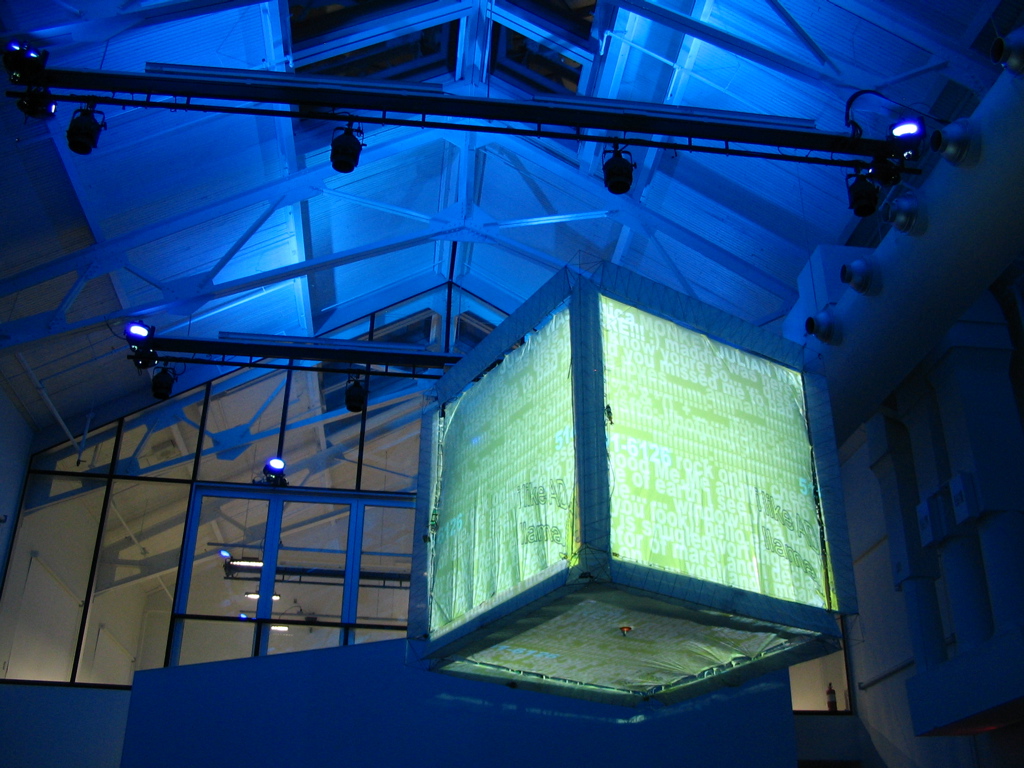Calibration de systèmes de caméras et projecteurs dans des applications de création multimédia
memoire » M.Sc.Lucie Bélanger
Tags: Calibration de caméra sur tête robotisée , Système multi-caméras , Système caméra-projecteur , Wiimotes , Écrans mobiles , Projection adaptative , Reconstruction 3D , Art technologique , Pan-tilt camera calibration , Multi-camera system , Camera-projector system , Wiimotes , Mobile screens , Adaptative projection , 3D reconstruction , Technological art
Date : 2009-12
Papyrus
http://hdl.handle.net/1866/3864Abstract
 This thesis focuses on computer vision applications for technological art projects. Camera and projector calibration is discussed in the context of tracking applications and 3D reconstruction in visual arts and performance art. The thesis is based on two collaborations with québécois artists Daniel Danis and Nicolas Reeves. Projective geometry and classical camera calibration techniques, such as planar calibration and calibration from epipolar geometry, are detailed to introduce the techniques implemented in both artistic projects. The project realized in collaboration with Nicolas Reeves consists of calibrating a pan-tilt camera-projector system in order to adapt videos to be projected in real time on mobile cubic screens. To fulfil the project, we used classical camera calibration techniques combined with our proposed camera pose calibration technique for pan-tilt systems. This technique uses elliptic planes, generated by the observation of a point in the scene while the camera is panning, to compute the camera pose in relation to the rotation centre of the pan-tilt system. The project developed in collaboration with Daniel Danis is based on multi-camera calibration. For this studio theatre project, we developed a multi-camera calibration algorithm to be used with a wiimote network. The technique based on epipolar geometry allows 3D reconstruction of a trajectory in a large environment at a low cost. The results obtained from the camera calibration techniques implemented are presented alongside their application in real public performance contexts.
This thesis focuses on computer vision applications for technological art projects. Camera and projector calibration is discussed in the context of tracking applications and 3D reconstruction in visual arts and performance art. The thesis is based on two collaborations with québécois artists Daniel Danis and Nicolas Reeves. Projective geometry and classical camera calibration techniques, such as planar calibration and calibration from epipolar geometry, are detailed to introduce the techniques implemented in both artistic projects. The project realized in collaboration with Nicolas Reeves consists of calibrating a pan-tilt camera-projector system in order to adapt videos to be projected in real time on mobile cubic screens. To fulfil the project, we used classical camera calibration techniques combined with our proposed camera pose calibration technique for pan-tilt systems. This technique uses elliptic planes, generated by the observation of a point in the scene while the camera is panning, to compute the camera pose in relation to the rotation centre of the pan-tilt system. The project developed in collaboration with Daniel Danis is based on multi-camera calibration. For this studio theatre project, we developed a multi-camera calibration algorithm to be used with a wiimote network. The technique based on epipolar geometry allows 3D reconstruction of a trajectory in a large environment at a low cost. The results obtained from the camera calibration techniques implemented are presented alongside their application in real public performance contexts.